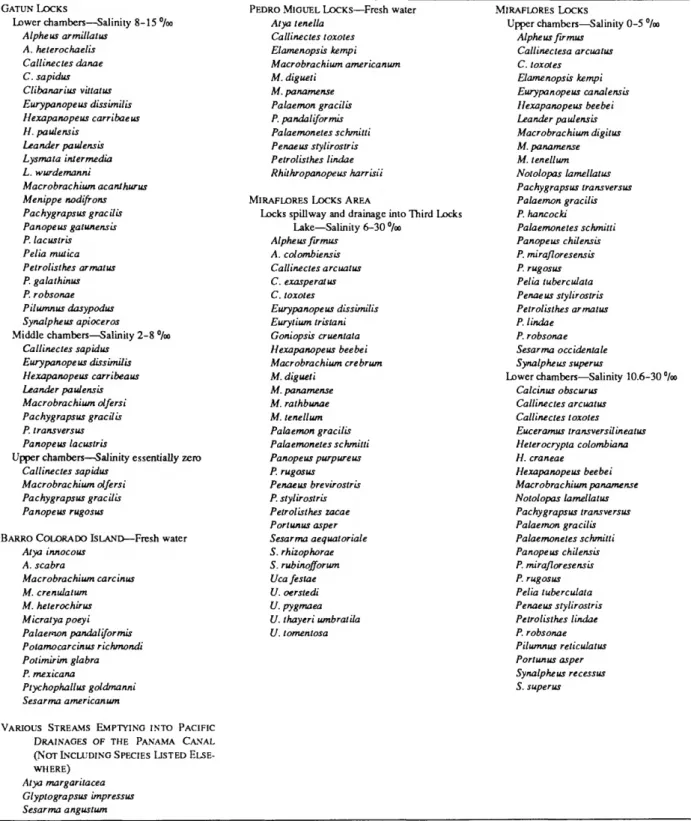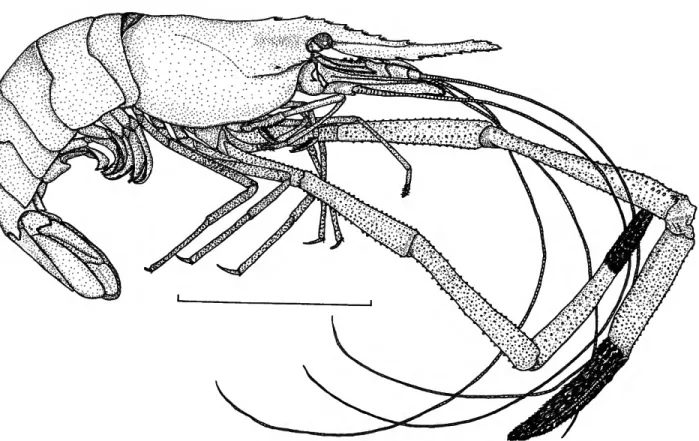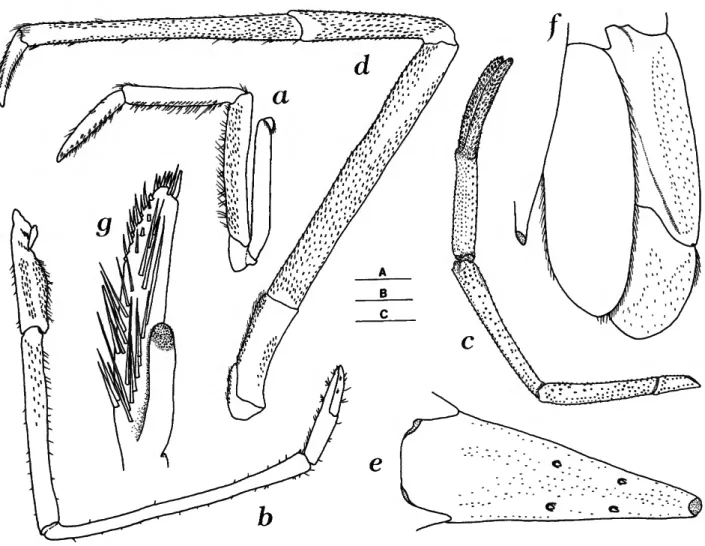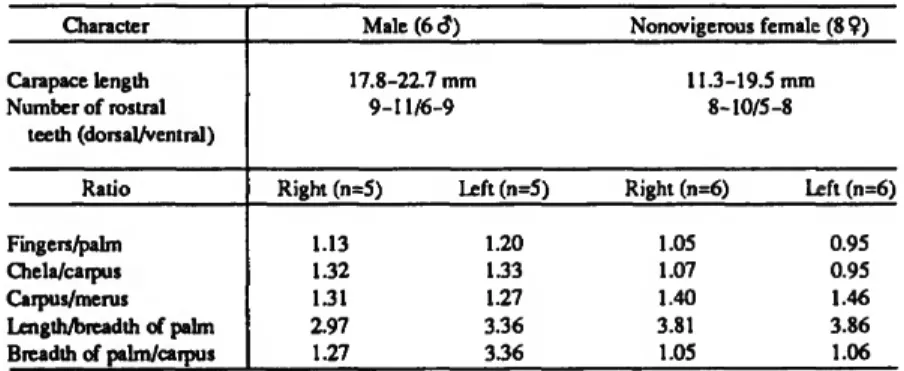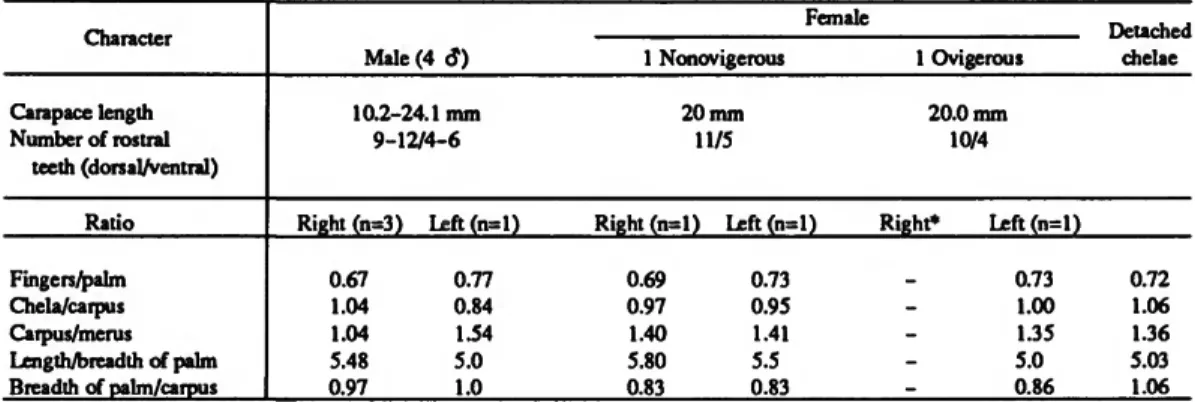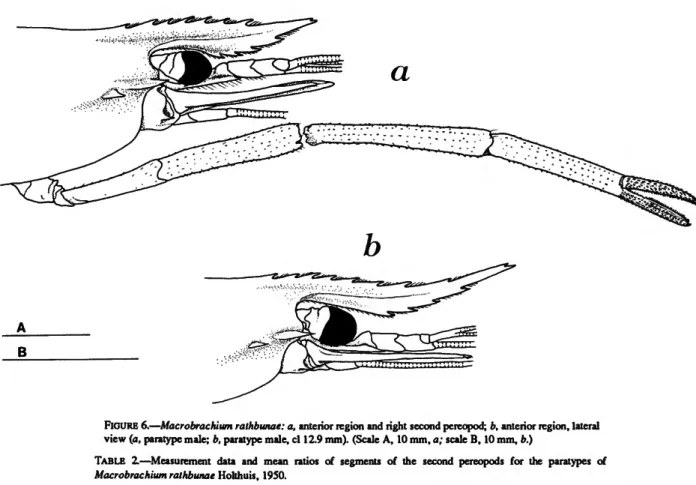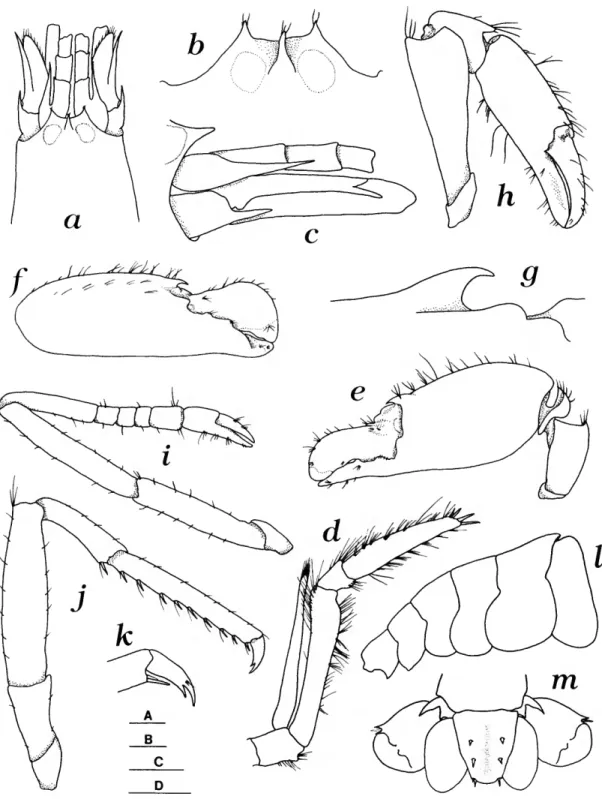Library of Congress Cataloging-in-Publication Data Abele, Lawrence G. Decapod crustaceans of the Panama Canal. Interest in the biota of the Panama Canal has waxed and waned in the years since its opening in 1914. The structure of the Panama Canal is easiest to understand if we follow the passage of a ship from the Pacific to the Atlantic (or vice versa).
In crustaceans, cl refers to the length of the carapace from the front edge to the rear edge of the carapace and.
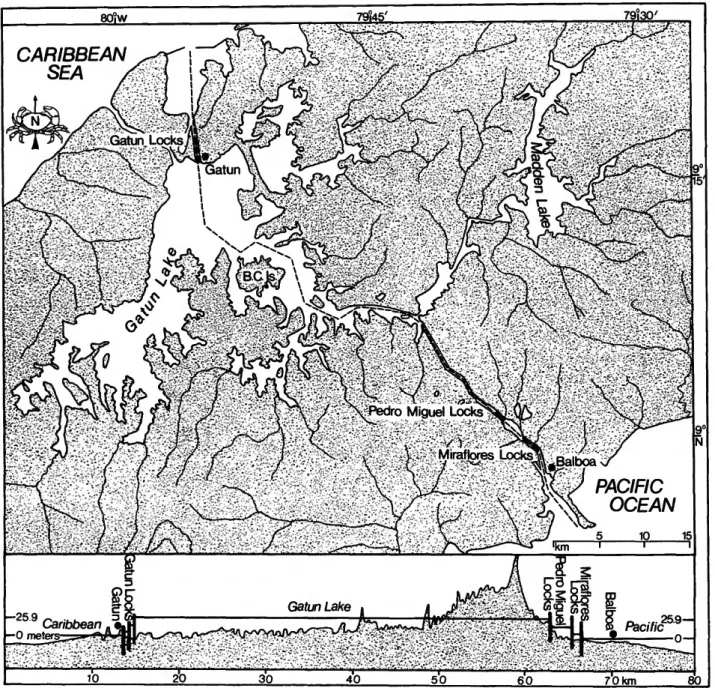
Leander paulensis Ortmann, 1897
The present specimen is the first published record from Panama, although the species is common in Panama's Atlantic drainage. DISTRIBUTION.—In freshwater habitats from western Mexico to Ecuador and from eastern Mexico through the West Indies to Brazil (Abele and Blum, 1977). DISTRIBUTION.—Known from northeastern Mexico to the Republic of Panama; Cuba, Jamaica and Puerto Rico.
Macrobrachium acanthurus (Wiegmann, 1836)
Macrobrachium americanum Bate, 1868
Macrobrachium carcinus (Linnaeus, 1758)
The second pereopod extends beyond the scaphocerite at the distal half of the merus in M. ETYMOLOGY.—The specific name is from the Latin crebrum (thick), referring to the thick pubescence on the fingers of the chela of the second pereopod.
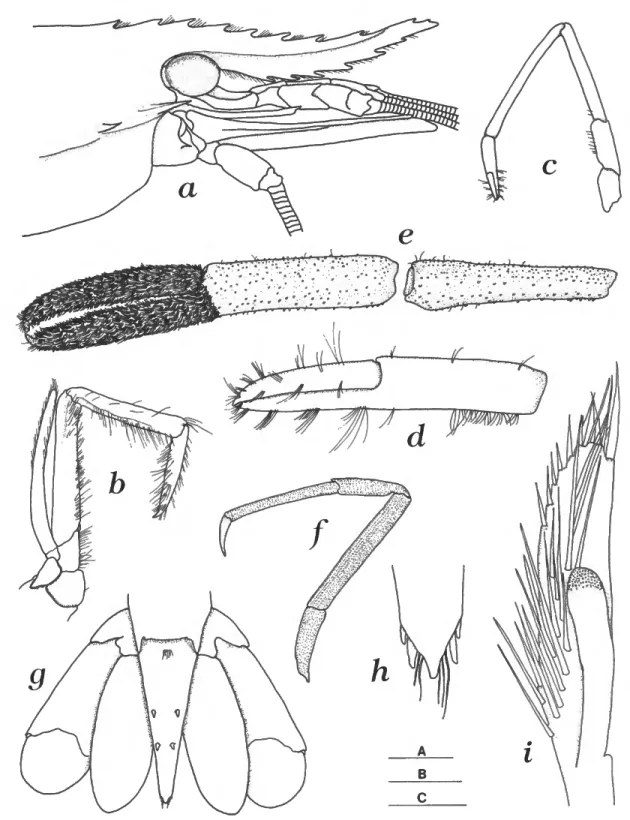
Macrobrachium crenulatum Holthuis, 1950
Appendix masculina (Figure Ag) present on second pleopod, about 2 times as long as cecum interna, with strong, stiff setae on upper surface and tip. Based on our examination of the types and Rathbun's (1912) original description, we believe that the illustration of M. The illustration appears to be very close to the present species, and we tentatively refer that illustration to the present species.
ETYMOLOGY.-The specific name comes from the Latin digitus (finger), which refers to the long pubescent fingers of the second pereopod.
Macrobrachium digued (Bouvier, 1895)
Telson (Figure 4e) covered with very small spinules on dorsal surface, armed with two pairs of spines, one pair in middle and other pair slightly closer to first pair than to posterior end; posterior end broken in present specimens. Uropod (Figure 4/) ovate, extending far beyond posterior end of telson; posterior lateral tip of base of uropod short, rounded rather than sharp, elongate in shape; exopod extending beyond endopod; diaeresis present; very small spine just medial to outer margin; number of very small spinules present on dorsal surface. DISTRIBUTION.—Known from freshwater of the Pacific drainage, from Baja California to Peru (Holthuis, 1952).
Macrobrachium heterochtrus (Wiegmann, 1836)
Macrobrachium olfersii (Wiegmann, 1836)
DISTRIBUTION - Known from fresh waters of eastern Central and South America from Mexico to southern Brazil; West Indies (Holthuis, 1952). DISTRIBUTION.—Lower Cape Fear River near Southport, North Carolina; Florida; Louisiana; Texas; Veracruz, Mexico, to Santa Catarina, Brazil (Williams, 1984).
Macrobrachium pa name rise Rathbun, 1912
Macrobrachium rathbunae Holthuis, 1950
The average finger-to-palm ratio of the second chela for 4 male specimens is 0.98, the average chela-to-carpus ratio is 1.12, and the rostral tooth formula is 9-10/5-6. The average finger to palm ratio of the second chela for 9 female specimens is 0.94, the average chela to carpus ratio.
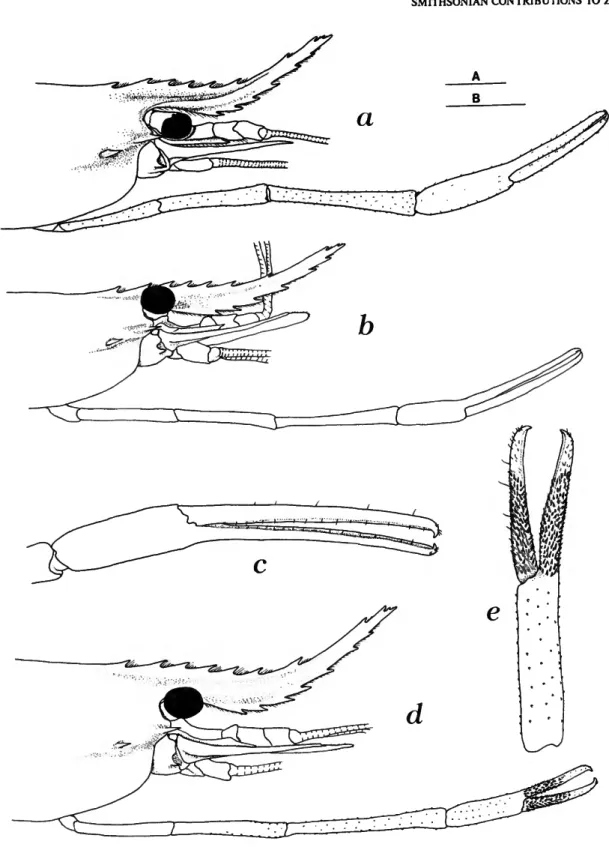
Macrobrachium tenellum (Smith, 1871)
REMARKS.—A male has a tooth in the typical smooth interval between the eighth and ninth dorsal teeth of the nest.
Palaemon gracilis (Smith, 1871)
Palaemon pandaliformis (Stimpson, 1871)
Palaemonetes schmitti Holthuis, 1950
Furthermore, Kim and Abele (1988:93) described considerable variation, including sexual variation, in this species, whereas Wicksten observed no variation. However, the presence of immovable spines on the outer margin of the protopodites of pleopods is such a unique feature among alpheids that it is likely that Wicksten simply overlooked the small distolateral spines of the telson.
Alpheus heterochaelis Say, 1818
Synalpheus apioceros Coutiere, 1909
Synalpheus recessus, new species
Large chela about 2.7 times as long as wide; palm about 1.6 times as long as fingers, ending in sharp downward-pointing teeth at upper distal end. Merus about half length of palm, with small almost imperceptible tooth (visible under high magnification) at distal end of upper margin. Carpus half palm length, armed with an almost inconspicuous minute acute tooth (visible at high magnification) on superior distal margin.
Merus nearly 2.5 times as long as wide, armed with almost inconspicuous small tooth (visible at high magnification) at distal end of upper margin. Carpus slightly more than 2.5 times as long as chela and composed of five segments; first segment slightly longer than sum of distal four segments; second slightly longer than third; third and fourth odd; fifth nearly equal length to sum of third and fourth segments. Propodus of third pereopod (Figure Sjjc) about 4.7 times as long as dactylus; inferior margin armed with eight to 10 moveable spines the entire length beyond the distal one.
Carpus more than half as long as propodus with one movable spine at distal end of lower margin. VARIATIONS.—This species shows sexual dimorphism in the shape of the pleura of the abdominal somites. REMARKS.—This species belongs to the Paulsoni group, which includes species of Synalpheus with supraocular spines at least equal to the rostrum in importance, the dactylus of the third pereopod with two hooks approximately equal in width at the base, a styloserite longer than the first segment of the antennules, canines always longer than wide and arachnoid, and a rostrum armed with a vertical extension that embraces the ocular bill (Coutiere, 1909).
Moreover, the spine on the upper edge of the palm of the great chela in S. ETYMOLOGY. The rostrum of the species arises from the anterior slope well behind the anterior margin of the carapace.
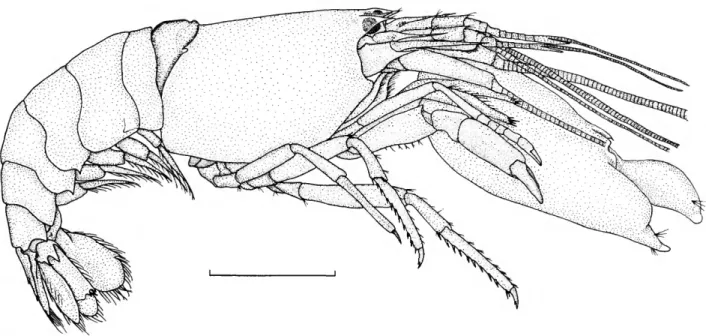
Synalpheus superus, new species
The pleuron (Figure 10/) of the male first abdominal somite has a sharp tooth on the ventral margin posteriorly; there are no teeth on the pleura of the female abdominal somites (Figure 100-. NOTES. – This species belongs to the Paulsoni group and appears to be most closely related to the 5. The shape of the vertebral column at the superior distal edge of the palm of the current species looks more like that of S.
ETYMOLOGY.-The baserite of this species has a long spine on the dorsal as well as the lateral surface.
Lysmata intermedia (Kingsley, 1878)
Telson (Fig. \0k) trapezoidal with curled lateral margins and broadly convex posterior margin; dorsal surface with a slight longitudinal median depression and has two pairs of distinct spines; anterior pair located at nearly lh length of telson; posterior pair closer to anterior pair than posterior margin; posterior margin armed with two pairs of strong spines;.
Lysmata wurdemanni (Gibbes, 1850)
Clibanarius vittatus (Bosc, 1802)
Euceramus transversilineatus (Lockington, 1878)
Petrolisthes armatus (Gibbes, 1850)
Petrolisthes galathinus (Bosc, 1802)
Variation includes the presence or absence of serrations and a fringe of setae on the anterior part of the manus. Insufficient serrations and a fringe of setae on the anterior part of the manus. In juveniles and even adult specimens without appendages, it is not easy to distinguish this species from P.
Petrolisthes robsonae Glassell, 1945
Petrolisthes zacae Haig, 1968
Notolopas lame Hat us Stimpson, 1871
The general shape of the carapace of adult males is more rounded than that of adult females and juveniles because the liver regions in adult males are wider than those of adult females and juveniles. Granules on the carapace are more prominent and numerous in adult females and juveniles than in adult males: the lateral margin of the rostrum, basal antennal segment and orbital lobe are equipped with small granules in adult females and juveniles, but these granules are almost absent in adults men. The gap between the fingers in adult males is very wide; a single adult male has a molar-like tubercle on the cutting edge of the movable finger near the base, but another adult male has a pair of small teeth; there is no gap at the proximal end in adult females and juveniles.
First, the presence of tubercles on the carapace varies with the size and sex of the specimen. Third, the difference in the shape of the anteroexternal angle of the merus of the third maxilliped between the present species and members of the genus Pelia is one degree. Based on the examination of much more material than Wicksten had available, we thus conclude that the species tuberculata should be placed in the genus Pelia.
DISTRIBUTION.—Known from the fresh waters at Shat-al- Arab, the confluence of the Euphrates and Tigis Rivers, near Basra, Iraq; Panama Canal. The present specimens have three to four anterior spines on the merus of the cheliped. REMARKS.—This species can easily be distinguished from other Eurypanopeus species with spoon-shaped small chelae by the very convex, wide carapace and the presence of tubercles on the merus and ischium of the last tarsus.
REMARKS.—Of the material examined, two males and all juveniles lack the red patch on the surface of the third jaw. The rounded lateral extremities of the third abdominal segment of this species can be used as a diagnostic character to distinguish it from P.
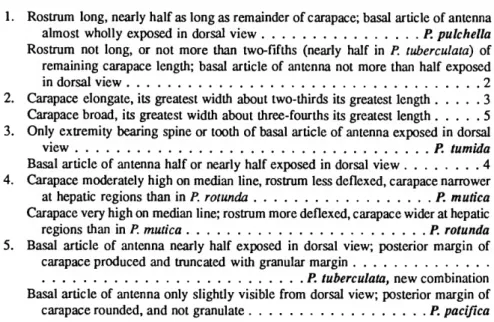
Eurytium tristani Rathbun, 1906
Of the material examined, males, but not females, have a red spot on the inner surface of the third maxilipcds. The posterolateral margin of the carapace is slightly arched, so the general shape of the carapace is much more rounded than that of H. In the major chela, there is no tooth on the base of the movable finger in P.
However, in the extant species the front of the carapace is not much produced, and the carapace is narrower than that of the extant species Hexapanopeus. ETYMOLOGY. The specific name comes from the Gatun Locks, Panama Canal, the type locality of the current species. Of the material examined, one male has a red spot on the inner surface of the third maxiliped.
COMPATIBILITY.—The present species is very variable, and it is difficult to determine the limits of variation. Marked differences occur in the shapes of the carapace, anterolateral teeth, frontal margin and supraorbital margin. His figure 5a (carapace drawing) is very similar to another type of the present species.
ETYMOLOGY.-The specific name is from the Miraflores Locks, Panama Canal, to which the type locality of the present species belongs. REMARKS.—The present male specimens agree well with the photograph of the female in Rathbun (1930, p.
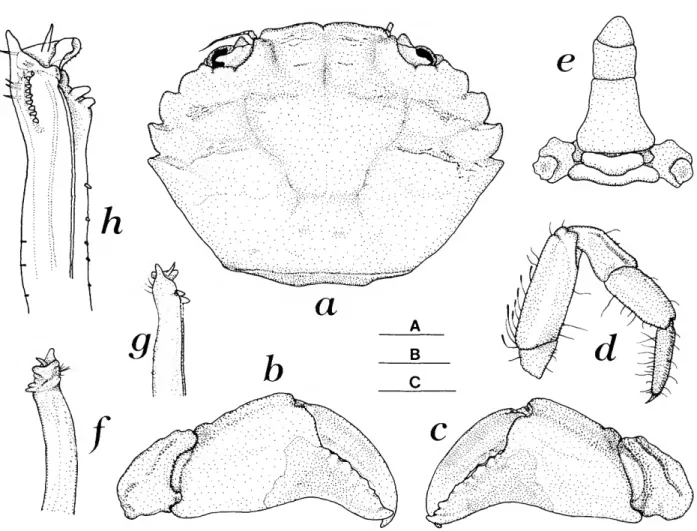
Uca thayeri umbratila Crane, 1941
However, we do not know if these species have established breeding populations outside the Panama Canal. Freshwater crustaceans and terrestrial decapods of the West Indies with special reference to Dominica. The Brachyura of the "Askoy" Expedition with Remarks on the Cancerological Collection in the Bay of Panama.
Notes on the North American Caridea in the Museum of the Peabody Academy of Science at Salem, Mass. Note on the genus Atya of Leach, with descriptions of four apparently new species in the cabinets of the British Museum.
